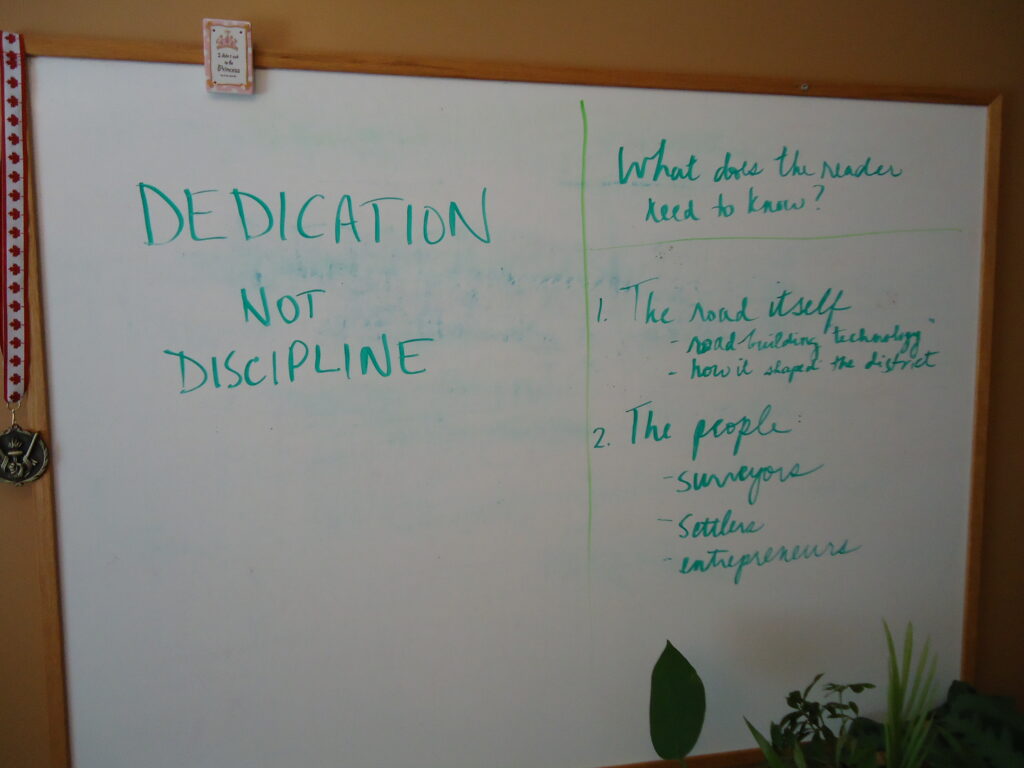INTO THE ARCHIVES: The Danger of Drowning in Data
Award-winning writer Charlotte Gray (my idol – have I mentioned that?) says that “every research trip is a fishing trip.” I think this is true. But there are two styles of fishing: there’s casting a net, and there’s setting a line. I’m not sure if Charlotte said that or if I did, but in any case, last week I cast my net in the online catalogues of:
- the public libraries in Ottawa and Muskoka;
- Library and Archives Canada (LAC); and
- the Ontario Archives (OA) in Toronto…
looking for anything they have on the Muskoka Road. Some of this I know from the article I wrote, but now I can indulge in more detail.
My focus until Christmas (as you, my loyal followers will know from earlier posts!) is on the surveyors of the road. But I know that I will find most of the information about the surveyors in the Ontario Archives in Toronto. In fact, most of the data I need for the entire book is in Toronto. Toronto is a five-hour drive and it doesn’t make much sense to make a separate trip there for every single topic in the book. So I’ve decided:
- To order up everything I think I’ll need for the book from the OA catalogue, drive to Toronto and look at all of it over a few days. (I know I’ll have to go back.)
- Wait until early November to go to Toronto, when Mr. Busy can come with me. We’ll combine the research trip into a bit of a getaway.
- Meantime, order up everything I think I’ll need from the public libraries and LAC, taking advantage of the time before the Toronto trip to review some local material.
The search of local material has snagged all kinds of fascinating results! Like: A Guidebook Containing Information for Intending Settlers With Illustrations, published by the Government of Canada in 1886. And a photograph titled, “Dredge fleet at Muskoka Road, December 1916.” Neither of these have anything to do with the surveyors, of course. Plus, each one includes an interesting twist. The guidebook is only available through the University of Guelph library and they charge $12.00 plus $2.00 shipping to lend it out. The photograph is actually a glass negative, available for viewing only at LAC’s “preservation centre” in Gatineau, and only with prior arrangements with an archivist.
I ordered the guidebook and will talk about my need for arts funding in a later post. I’ve deferred arranging to look at the photograph until later.
This net-casting is dangerous work! I can easily drown in data. I can easily get sidetracked and lose sight of what I wanted to achieve as a first milestone. I have to force myself to file information that is not related to the first milestone and look at it later. (I should probably have delayed ordering the guidebook until after Christmas!) I need really, really good records and files, so that months from now I can cast my line directly to a piece of data that I already know exists, instead of casting my net all over again, trying to remember where I saw a particular reference that I now need.
To remind myself of this, here’s what I’ve added to my whiteboard:



